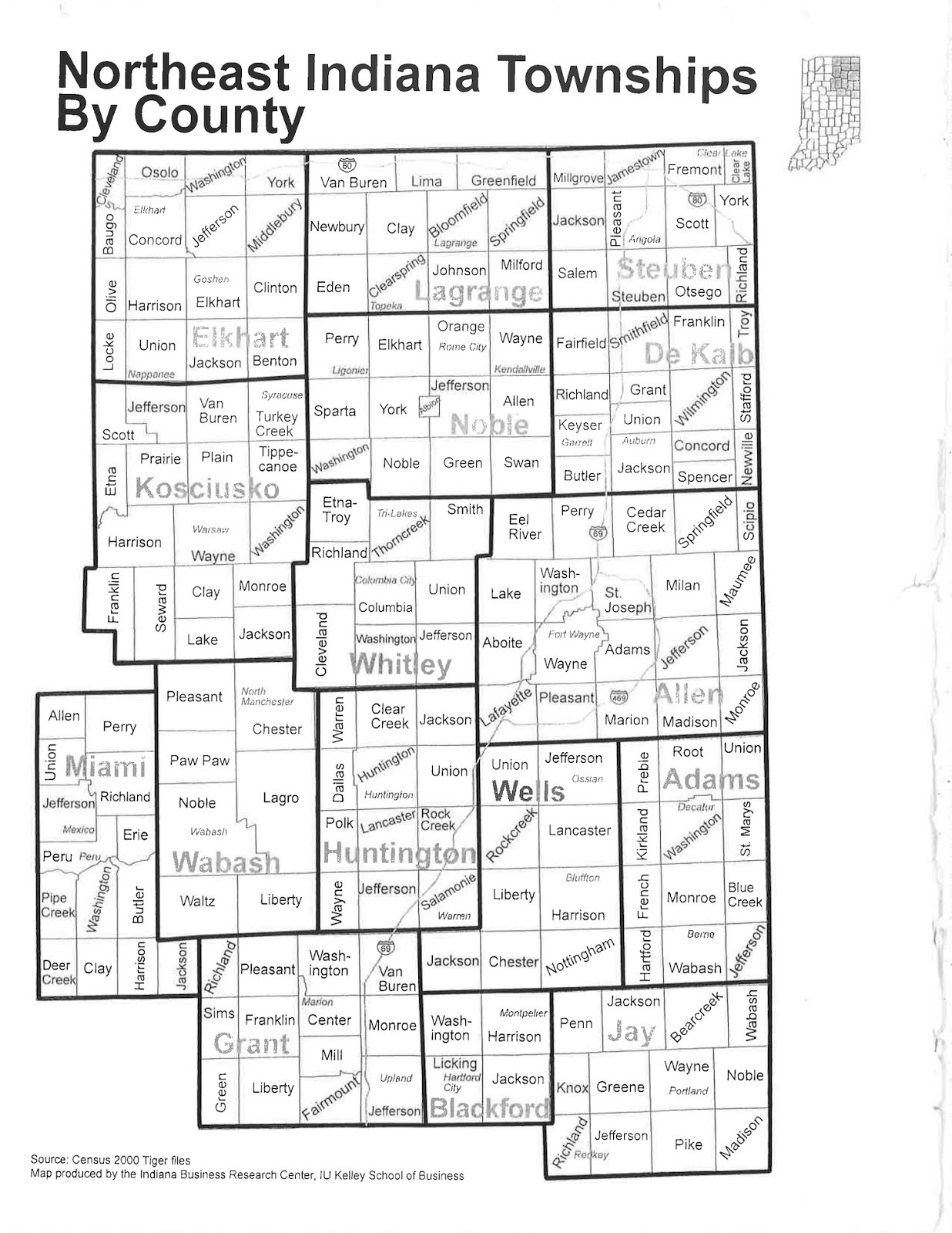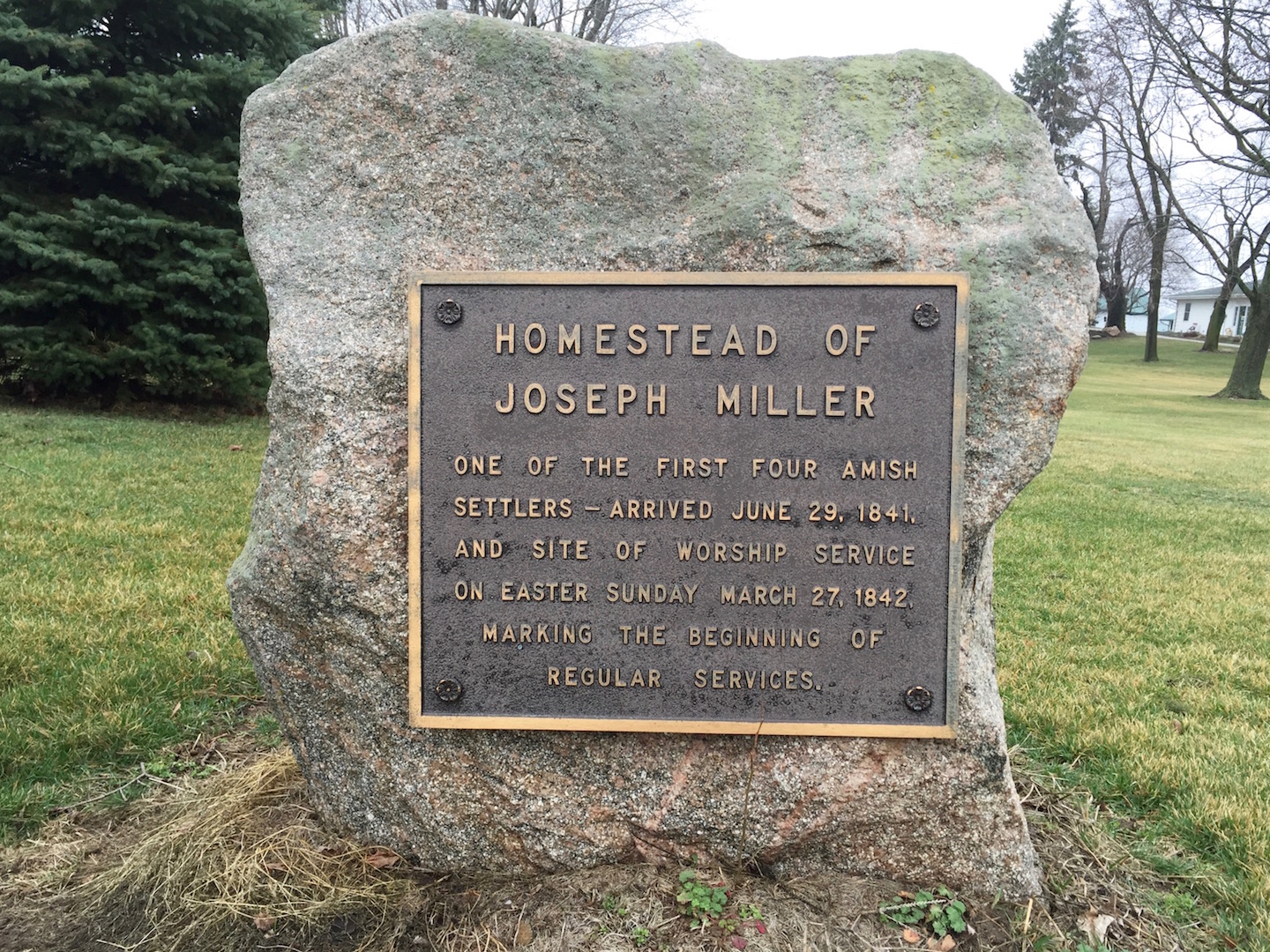|
Rheinheimergenealogypages
including Reinhard, Rheinheimer, Shively, and Stout |
 Amish settlers began moving to northern Indiana around 1840, coming primarily from two established Amish communities in Pennsylvania and Ohio. Those arriving from Somerset County, PA, mainly settled in Newbury Township in LaGrange County. Those coming from Holmes County, OH, mostly resided in Clinton Township in Elkhart County (about 5 miles east of Goshen).
Amish settlers began moving to northern Indiana around 1840, coming primarily from two established Amish communities in Pennsylvania and Ohio. Those arriving from Somerset County, PA, mainly settled in Newbury Township in LaGrange County. Those coming from Holmes County, OH, mostly resided in Clinton Township in Elkhart County (about 5 miles east of Goshen).
Nine miles apart, these two communities tried to worship together but bad roads in winter prevented regular services. However, on Easter Sunday, 27 March 1842, services were resumed in the home of Preacher Joseph Miller (1808-1877) in Clinton Township. 14 members were present.

More settlers arrived in subsequent years. The religious culture and regulations of the two communities were slightly different, with the Newbury Township residents a bit more conservative. According to the book, The Story of Forks Mennonite Church, written by J. C. Wenger, a significant split occurred in 1854.
The insurmountable issues for the Amish and their more progressive Amish Mennonite brethren included clothing styles, modes of baptism, taking political office, business enterprises, education, implementing Sunday School, and building meetinghouses (Amish traditionally met only in homes).
The Amish Mennonites soon organized three congregations in LaGrange and Elkhart counties: Maple Grove (Topeka) in 1856, Clinton Frame (Clinton Township) in 1863 and Forks (Newbury Township) in 1864.
Amish historian John (Hans) Bontreger described the split as noteworthy, lamentable and a complete separation. "Children separated from parents and blood siblings separated from each other." Both sides, as is common throughout history, were trying to be faithful to their interpretation of Scripture but the fallout from the division was hurtful and lasting.
With claims that "pride was given free rein," even some of the Amish Mennonites could not agree with all the changes. Soon there were schisms among the Amish Mennonites, such as the formation of the conservative Townline congregation in 1876 from Forks church. (Immigrant John Rheinheimer, his first wife Anna, and second wife Magdalena, are buried in Townline Cemetery.) Conflicts would continue over the degree of change permissible in the traditional expression of nonconformity to the world, a basic tenet of the Amish and Mennonite belief system.
It was during this time that the term Old Order Amish began to be used to distinguish the segment of the Amish Mennonites who resisted the "new" forms of social organizing and technology. (By 1925 all Amish Mennonite congregations merged with the Mennonite Church, dropping Amish from their name.)
Such were the ecclesiastical conditions that John Rheinheimer entered when he and Anna Miller married on 08 August 1863 in Newbury Township. John reportedly did not belong to any church at that time; Anna was from an Amish Mennonite family.

